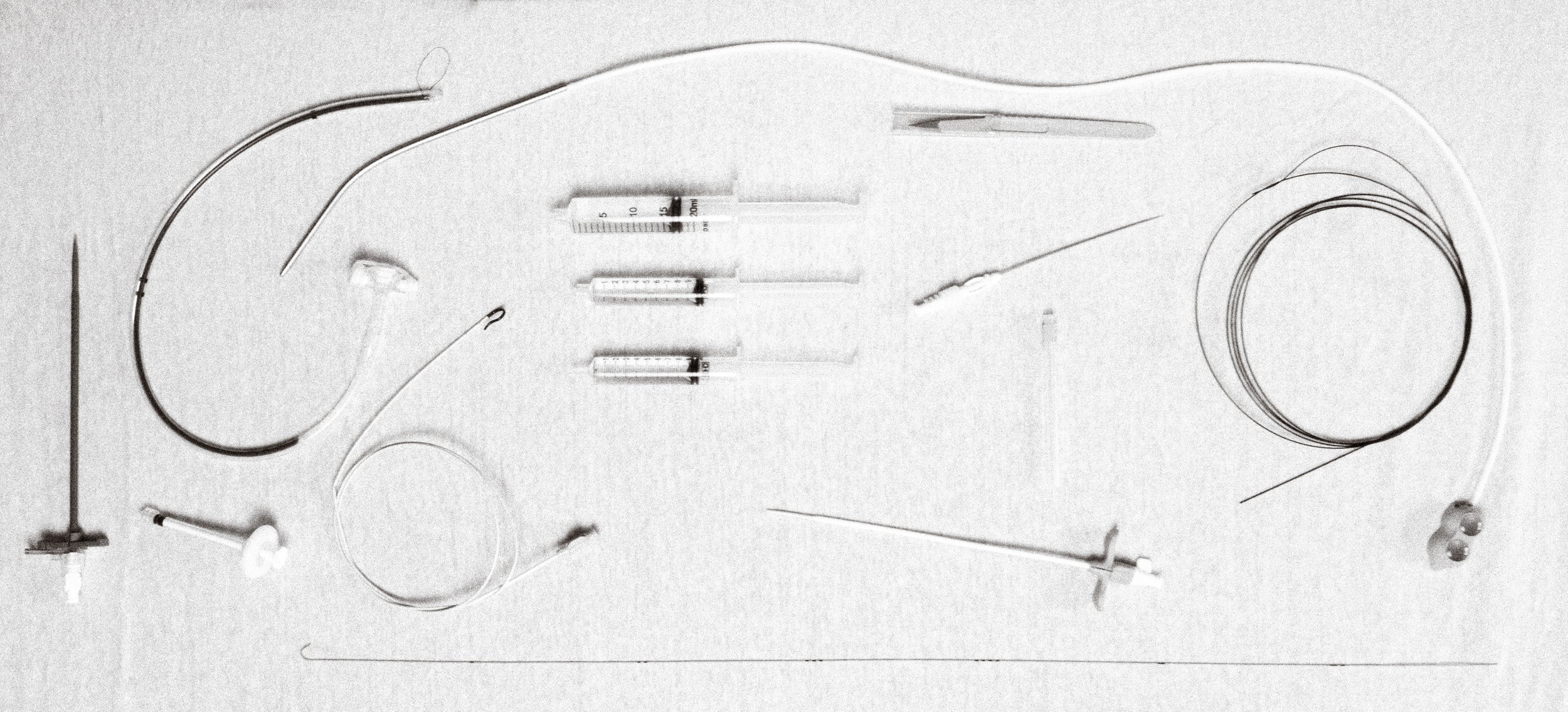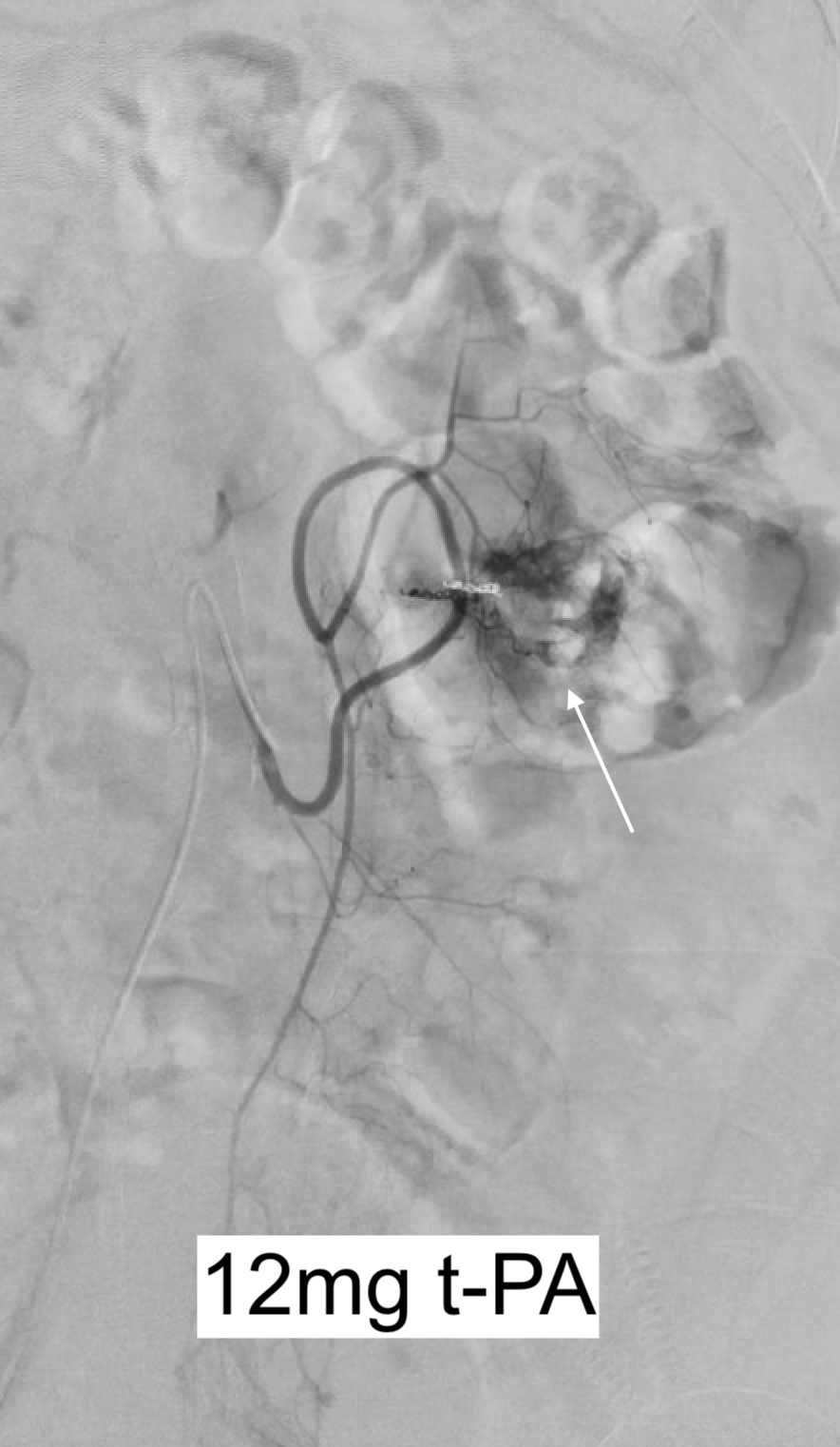
Case of the Month - December 2024
B - 35% - 45%
Recent studies report successfully localizing and treating the occult bleed with provocative angiography in ~31-49% of cases with 0% procedure-related mortality. A review including 230 patients found a single case of intestinal hemorrhage requiring transfusion and another study of 36 cases had a single case of ischemic bowel from the embolization.
Right CFA access was obtained and the inferior mesenteric artery was selected with a Simmons 1 catheter. Further superselection was achieved with a 2.0 Fr ProGreat microcatheter and fathom microwire. Initial arteriography via the base catheter and superselective arteriography of the left colic artery showed no active bleeding. Note the coil from a prior embolization years earlier.
Provocative IMA arteriography was then performed by infusion 200 mcg nitroglycerine, 5000 IU heparin, and escalating doses of t-PA into the IMA. Protocols vary but studies report t-PA doses up to 25-50 mg. Since the infused t-PA must go through the liver before becoming systemic and the first pass metabolism is very high, the actual systemic exposure to t-PA is very low. Active bleeding was provoked after 12 mg t-PA in the descending colon in the region of prior embolization.
Which of the following is the most common and safest embolic in this setting?
A. Glue
B. Gelfoam
C. Particles (e.g. PVA)
D. Coils



